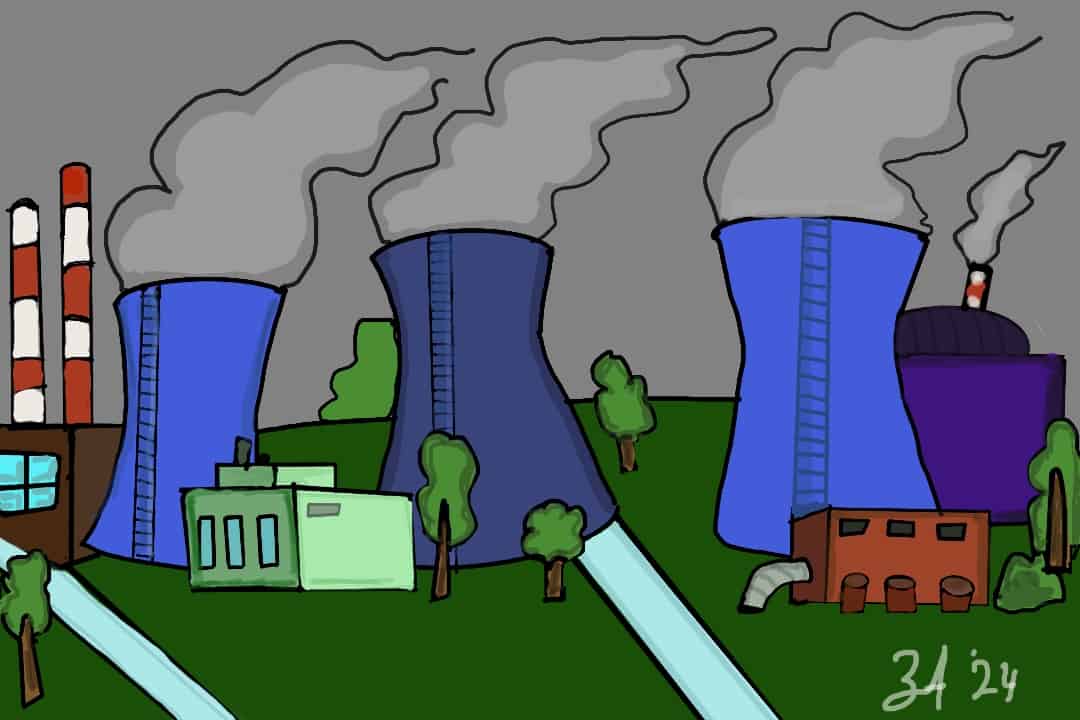Coal, as climate scientists and activists are quick to point out, is the dirtiest of the fossil fuels. Coal power plants emit more emissions, measured in carbon dioxide equivalents per gigawatt-hour of power generated, than any other power source. A carbon dioxide equivalent is a measure that compares the emissions from different greenhouse gases based on their global warming potential by converting the amounts of other gas emissions to the amount of carbon dioxide with the equivalent global warming potential.
So, as the world vows to transition away from fossil fuels altogether, it’s a surprising — and perhaps a bit discouraging — fact that, as recently as 2022, about 25 per cent of the energy generated for primary purposes worldwide still came from coal. Primary purposes include electricity, transport, and heating.
Still, according to recent research, the idea of a worldwide coal phase-out isn’t just a nice sentiment; it might be an economic inevitability.
A new report published by British energy think tank Wood Mackenzie (WM) predicts that 2024 will mark the last time that global coal consumption will increase annually. In other words, “peak coal” might be happening right now.
These predictions are bold. They have wide-ranging implications for both the energy sector and the ongoing global climate crisis.
Coal as power
Coal fuelled the initial fires of the Industrial Revolution. As innovations in the nineteenth century led to the rapid adoption of industry across much of the world, industrialized nations needed a source of energy that could fuel factories, steam trains, and early electric power grids.
Coal had key advantages over traditional biomass fuels, such as firewood and animal fats like whale oil. It’s certainly more efficient — more power can be generated per kilogram of coal than per kilogram of wood simply because coal has more chemically available carbon to combust.
The other obvious advantage of coal is sheer abundance. Even today, there are enormous coal deposits across Europe, North America, Asia, Africa, and elsewhere. These deposits were discovered centuries ago and still have huge amounts of coal. To early industrialists, the supply of coal across the world must have seemed limitless.
The cost of coal
As with all new solutions, coal has its trade-offs. Coal burning has always affected local air quality, but we now understand just how damaging it is on a global scale. Despite being a great solution for innovations early in the Industrial Revolution, coal is responsible for great levels of carbon dioxide emissions, is difficult to transport, and is environmentally devastating to extract.
Meanwhile, industrial applications for coal have declined in the last century or so. For purposes like transport and heating, we use petroleum and natural gas almost exclusively. Since 2014, there have been zero coal-fired power plants in Ontario; the vast majority of power in the province comes from nuclear, hydroelectric, and wind sources.
This progress, though astonishing in hindsight, was not inevitable. Climate action — such as the phase-out of an entire part of the energy sector — required the sustained attention of policymakers for years to overcome the forces of economics. So if phase-out of coal in highly-developed Ontario was such a challenge, why do experts believe that the rest of the world is soon to follow suit?
“Peak coal” and what it means
WM’s research is rooted in a few key facts. Today, China and India represent the largest coal consumers, with China alone consuming just above 50 per cent of all coal burned annually on Earth. The coal burned by China in 2022 totalled about 8.25 billion metric tons of carbon dioxide emissions — more carbon than the total emissions of the US, Canada, Germany, UK, Brazil, and Saudi Arabia combined. Thankfully, the analysis presented by WM shows that as China continues to develop, it is already beginning to invest in green power sources.
In its report, WM points out the inherent problems with coal discussed above and makes the case that the market forces of China’s economy, like demand, price, and availability, will push its energy sector away from coal. And if the largest consumer of coal declines in its consumption, they argue, so too will other countries across the world. Given all this, WM predicts that 2024 will see the peak of coal demand worldwide.
There’s good reason to be optimistic. However, we cannot afford to label coal emissions as purely a problem for China. Western nations are dependent on Chinese manufacturing of consumer goods. Furthermore, besides the rest of Canada’s heavy trade with China, Canada also exports $3.5 billion of coal to China each year.
Like all climate issues, coal emissions represent a global problem. And though we have proven progress is possible, it will require a global approach to bring coal consumption to an end.



No comments to display.